Interstitial Cystitis
Definition of interstitial Cystitis (IC).
Also known as Painful Bladder Syndrome (PBS). IC is a result of damage to the protective lining inside the bladder (like having 100+ paper cuts inside the bladder) which causes chronic bladder pain, dysuria (burning with urination), frequency, urgency, and nocturia (getting up multiple times at night).
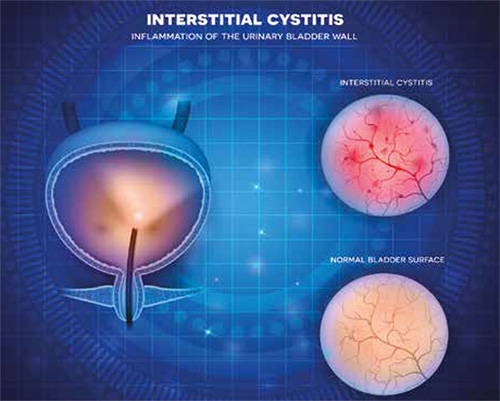
Common causes of IC.
The three most common causes of IC are:
- RECURRENT UTIs. Frequent and persistent UTI can lead to chronic inflammation inside the bladder. Often, after the bladder infection is resolved, the patient CONTINUES to have bladder pain and discomfort even with a NEGATIVE urine culture.
- AUTOIMMUNE disease. Patient with autoimmune disease such as Irritable Bowel Syndrome (IBS), fibromyalgia, lupus and others have a higher likelihood for IC. IBS is when the body attacks itself, specifically attacking the inner lining of the bowel mucosa. IC is when the body attacks the inner lining of the bladder.
- UNKNOWN causes. Sometime there is no trigger or underlying factor for a patient’s IC attack. No prior recurrent UTIs. No prior bladder problems and no other medical problems.
Patho-physiology of IC
Interstitial cystitis is a result of damage to the inner lining of the bladder, specifically damage to the GAG layer of the uroepithelium. See picture below. With injury to the GAG layer (like a tear in your protective skin layer), this leads to increased hypervacularity, inflammation, glomerulations, and bleeding sites throughout the bladder lining. Clinically, the patient only feels like she has a bladder infection every day, but no true bladder infection (e.g. NEGATIVE urine culture) exists.
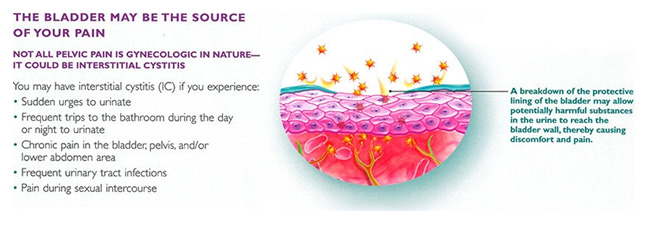
Different levels of SEVERITY of Interstitial cystitis
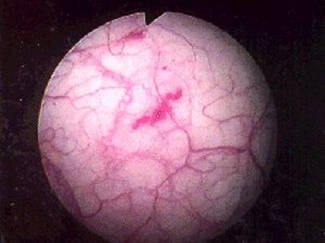
MILD
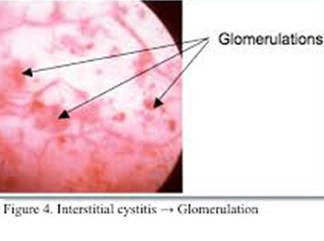
MODERATE
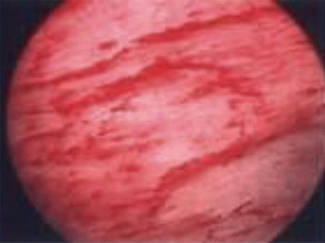
SEVERE
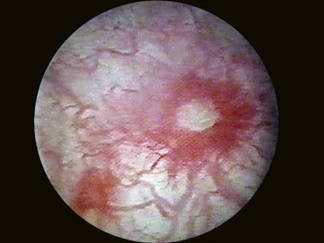
MOST SEVERE
MILD IC. hypervascularity and inflammation thoughout the inner bladder wall.
MODERATE IC which includes worsening inflammation and glomerulation (red hemorragic spot) with intermittent bleeding site.
SEVERE IC. The inner bladder lining has bleeding sites in all 4 quadrants during the cystosocopy with hydrodistention procedure.
Hunner's Ulcers. This is the MOST SEVERE form of IC, with ulcerations inside the bladder wall. Hunner's ulcers ONLY occur is less than 7% of the patients. Hunner’s ulcer looks like a circular crater inside the lining of the bladder.
Different treatment options
1st line of treatment
- a. IC diet (see below)
- b. Pyridium 200 mg BID, prn (as needed. Take only with IC flare)
- c. Alkaline water (Water bottle that shows a pH of 9.0 or 9.5 or 10.0)
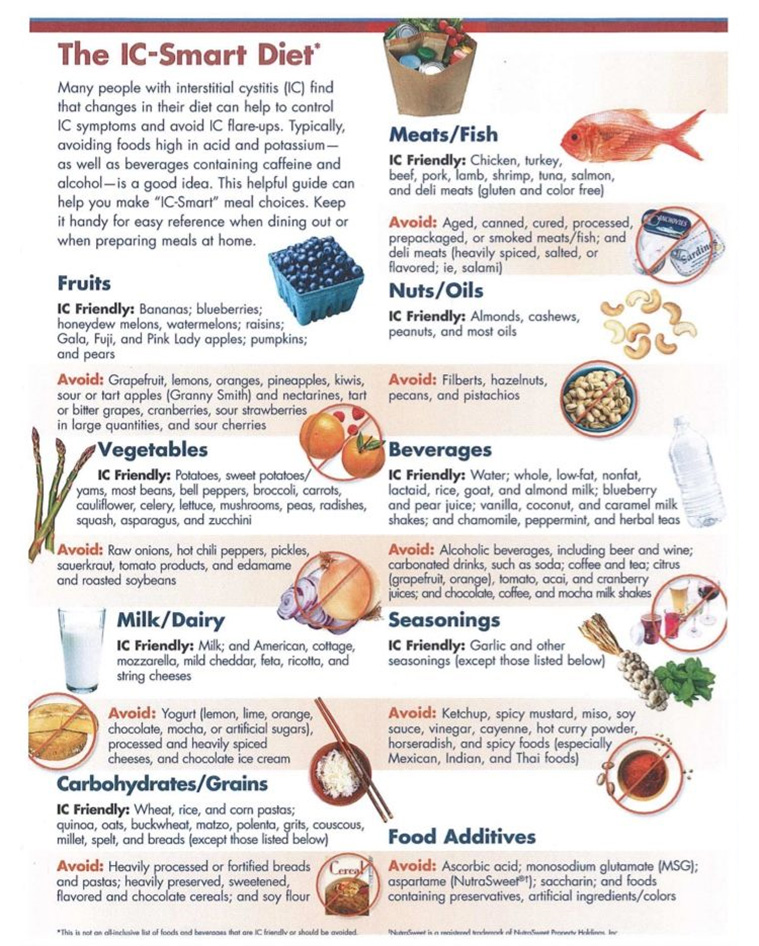
2nd line of treatment
- Bladder instillations (that are performed in the office) using a bladder cocktail of Heparin, Solumedrol, and Lidocaine. Typically, the patient will need between 6-12 treatments, depending upon the severity of IC.
- Elmiron 100 mg TID x 6 months minimum. It takes at least 3 months so see improvement in the symptoms. HOWEVER, there are a lot of side effects, which include hair loss, diarrhea, nausea, blood in stool, headaches, and possible liver damage (with elevated liver enzymes).
- This is the LAST line of treatment. Cystoscopy with hydrodistension, that is performed in the operating room. The goal is to overstretch the bladder to 600-800 cc of saline. Normal bladder capacity is 400-500 cc.